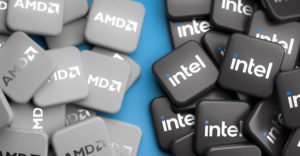
Microsoft on Wednesday unveiled a publicbeta version of Microsoft Exchange 2010.
This next version of Microsoft’s email server will ship later thisyear, Microsoft said.
The new Exchange version is built around a hybrid design that willform the infrastructure for a hosted email service at home or at theoffice.
“This new version is classic Microsoft. It is a first version of a newarchitecture that builds in some archiving features with a basicfeature set. I expect to see Microsoft push further down this road,”Christopher Voce, an analyst with Forrester, told TechNewsWorld.
New Goals
Microsoft appears to be paying closer attention to the changing workstyles of its Office suite users. The new version includes features togive end-users similar experiences whether they connect on PC, phoneor browser.
Another goal is to help businesses reduce costs. Microsoft is steppinginto areas that it previously relied on its partners to provide,suggested Voce.
“One of the new design points by Microsoft attacks the cost ofstorage. The new Exchange product has a more hosted friendly platformthat is a much better fit,” he explained.
Key Features
Exchange 2010 is the first part of the next wave of MicrosoftOffice-related products and the first server in a new generation ofMicrosoft server technology built from the ground up. Its new designworks both on-premises and as an online service, according to RajeshJha, corporate vice president of Exchange at Microsoft.
One of the most significant new features in Exchange 2010 is anintegrated email archive. Previous Exchange versions lacked ability for companies to archivetheir e-mail centrally without third-party software. Exchange 2010will include integrated archiving and multi-mailbox searchcapabilities at no extra cost.
Improved Interface
“Exchange 2007 was more focused on back-office improvements,” Voce said. “NowExchange 2010 brings much more balanced improvements through newfeatures. It is a major upgrade with a new face to it.”
Among the new features is the the ability to view threaded emailconversations in a format similar to Google’s Gmail. Microsoft has also added a button to ignore emailthreads.
Unified messaging features were a hallmark in Exchange 2007. Thesefeatures are expanded in Exchange 2010 with speech-to-texttranscription of voicemail as well as customized voicemail menus.
More Goodies
The MailTips feature shows users a text snippet near the top of amessage to prevent sending unwarranted or unnecessary emails. Forinstance, a warning alerts the sender about how many people are on adistribution list. It also warns if the email is headed for someone outside ofthe sender’s organization or has an out-of-office notification up.
Powershell support gives administrators one set of tools for managinginternal users and users on hosted platforms. The tool set includesthe ability to bridge the gap between the two.
Site resilience is provided by a geographically dispersed failovercluster that spans more than one physical data center.
Federation technology used in Windows Server provides Exchange 2010hosted and local users with the same information. This cross-domainsupport enables features such as sharing free/busy time amongcalendars of hosted and on-premises users.
Cost Barrier
Storage costs in the past have been very steep, Voce noted. The newExchange version gives Microsoft some strategies for lowering thosecosts for its users.
Microsoft also made Exchange 2010 more flexible to deploy and manage.It does this by unifying the platform with the same enterprise-gradecapabilities for both on-premises and as-a-service deployment, saidMicrosoft.
Customers deploying the server have simplified features providingalways-on communications and disaster recovery. Exchange 2010 alsoimproves performance running on lower-cost direct-attached storage,enabling organizations to reduce storage costs by up to85 percent, accordingto Microsoft.





















































